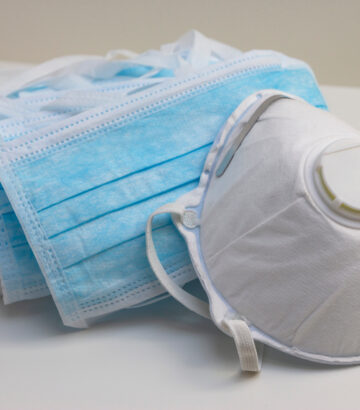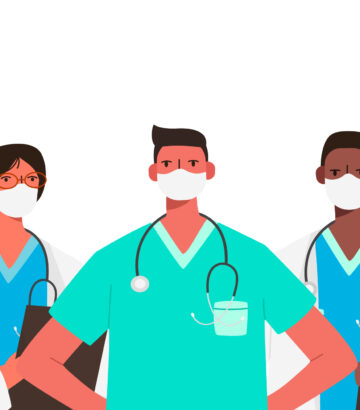The Shift Toward Safer Hospitals
As we face the ongoing COVID-19 pandemic together, reduced government and press reporting are not reflecting the current high levels of infection, hospitalization, death and long COVID organ damage and disability. In the United States, there are an estimated 2 million new infections every day, a big increase in hospitalizations, and 2,000 deaths every week. Long COVID symptoms affect between 20 and 30% of those infected, and every reinfection increases their likelihood.
There is a nationwide and worldwide shift towards practical and necessary improved infection prevention practices happening now. Many hospitals are leading the way by reinstituting universal protections for patients, staff, and visitors. Patients need to know that all healthcare settings are safe, especially since those who come to the hospital for a variety of other reasons are at much higher risk for severe disease and death.
What does this necessary protection look like? It is now well-documented that COVID-19 is airborne and spreads primarily through invisible aerosols (like smoke). Breathing them in leads to infection, and they are breathed out by infected people (patients, hospital staff, or visitors) who may be entirely without symptoms. Hospitals must use the right tool for the job, an N95 (or better) respirator, which is designed to provide protection against airborne infection.
It’s important to realize that anyone can be infected with COVID-19 and not even know it. Due to the virus’s ability to spread as an aerosol, it’s impossible to contain protection just to the rooms of known infected patients or to rely on leaky surgical masks that aren’t designed for this purpose. To protect everyone, there needs to be a shift to universal N95 respirators, clean air policies that include elevated levels of ventilation, filtration, and UV disinfection, as well as testing to identify both symptomatic and asymptomatic infections, and effective isolation policies.
Not letting the perfect be the enemy of the good, it’s important to highlight the steps being taken in the right direction. Some states, like Illinois, Maryland, and New York, as well as locals such as Los Angeles and San Francisco, and health systems such as Kaiser, have already recommended everyone wear masks in healthcare facilities during the current high-risk respiratory illness season. The case for infection prevention through masking in healthcare is clear. It keeps patients, staff and visitors safer, reduces the illness and long COVID impacts on healthcare workers, eases the burden on hospitals, and lessens the impact of COVID on society.
We have long recognized the necessity and benefits of universal hand washing, as well as universal blood precautions for hepatitis B, C and HIV. We now need to recognize and adopt proven methods to curtail the spread of aerosol infectious agents.
In response to the ongoing COVID infections, many hospitals in the U.S. have improved their masking protocols. The World Health Network (WHN) is identifying and acknowledging hospitals using improved masking. To do this, WHN regularly shares updates on improved masking in hospitals through its Hospital Ranking tool. WHN identifies which hospitals are instituting mask mandates. The highest levels of safety are those who are adopting universal masks; some are masking in more limited areas or just for healthcare workers, with lower levels, but still important, safety impacts. Upgrading to respirator masks is more often recommended than required, but the best safety is in locations such as LA County where respirators are required.
At the top of the rankings are Robert Wood Johnson (RWJ) Barnabas Health in New Jersey and Guam Memorial Hospital in Guam. RWJ Barnabas offers the safety of universal masks for healthcare workers, patients and visitors, testing of all patients, and distancing, while Memorial Hospital in Guam boasts a policy of universal well-fitted KN95/N95 masks for healthcare workers, patients and visitors. There are 40 hospital systems that provide universal masking for healthcare workers, patients and visitors including the UPMC system with 30 hospitals, Marin and Santa Clara Counties with 9 hospitals, Cedars Sinai in LA with 5 hospitals, and many others.
Improvements that provide some protection for patients, visitors, and staff from COVID-19 and other airborne diseases are surely important, and are both a sign of caring and better medical care. However, it is vital that official health and safety agencies, healthcare facilities, and providers don’t stop there. We know the benefits and consequences of ignoring what science and four years of experience are telling us. The decisions of hospitals to improve masking are progress, but it’s not the end. We need to keep advancing to universal masking with high-quality respirators for all staff, patients and visitors as well as other safety precautions. This should be happening wherever patients are at risk, not just when there’s a large spike in cases.











